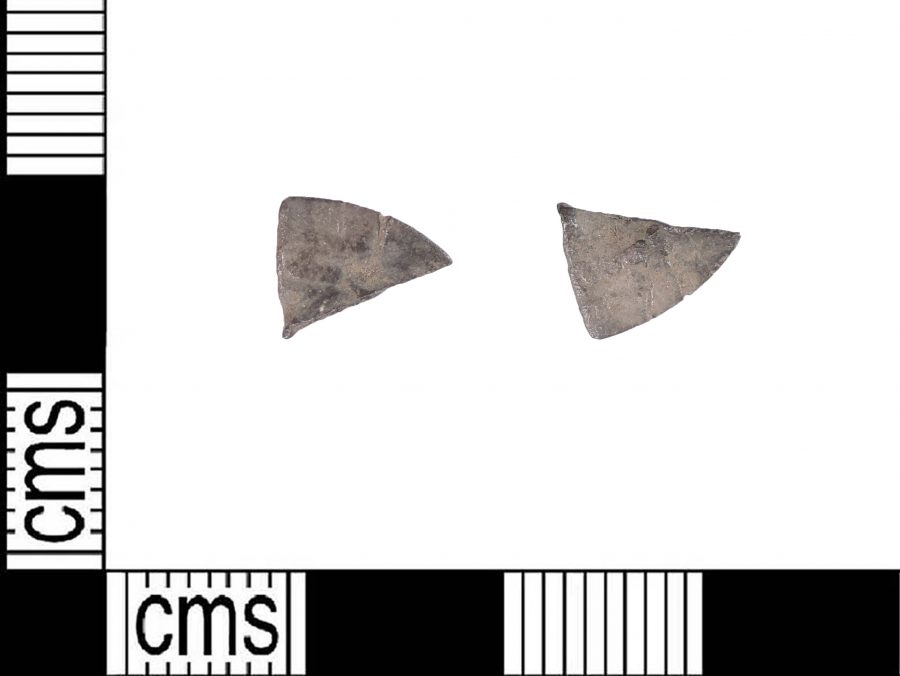
Description
Arabic Dirham Fragment (LIN-5F318A)
A cut Arabic silver dirham frgament found near Torksey, Lincolnshire
Fragment of an Early Medieval Arabic dirham, probably dating between the eighth-ninth centuries. The fragment appears to have been cut down into a smaller module. The fact that it may have been cut suggests that it was used as part of a bullion transaction in line with the dual bullion-monetary economy established by the Vikings in England. The circulation of Arabic dirhams is generally attributed to Viking activities and this example’s proximity to the winter camp of Torksey likely connects the dirham with the activities of its inhabitants.
Arabic coins are especially useful for dating sites, because they carry the date when they were minted. This permits precise dating where the part of the coin with the date survives, whereas European coins can only be dated to the reign of the ruler depicted on them. In western descriptions of these coins, the Arabic dates found on the coins are usually listed in square brackets, as above, and the European equivalent is listed after it. This coin is a product of the Abbasid Caliphate which was ruled from its capital in Baghdad. The Abbasid Caliphate was at its greatest extent c.850 CE, occupying lands from Morocco in the west to Afghanistan in the east.
Object Type
- Coin
Date
- circa 700 — 900
Style
Ascribed Culture
Original/Reproduction
- Original
Material
Collection
- Viking Objects
Current Location
- Private Ownership
Keywords
- Arabic, bullion, coin, dirham, Economy, Lincolnshire, Portable_Antiquities_Scheme, silver, trade, Viking
Further information
You can see the original at Private Ownership.
This object is related to
Torksey, Lincolnshire.
Find out about Torksey, Lincolnshire.
Acknowledgements
(c) Portable Antiquities Scheme, CC BY-SA 2.0
References

